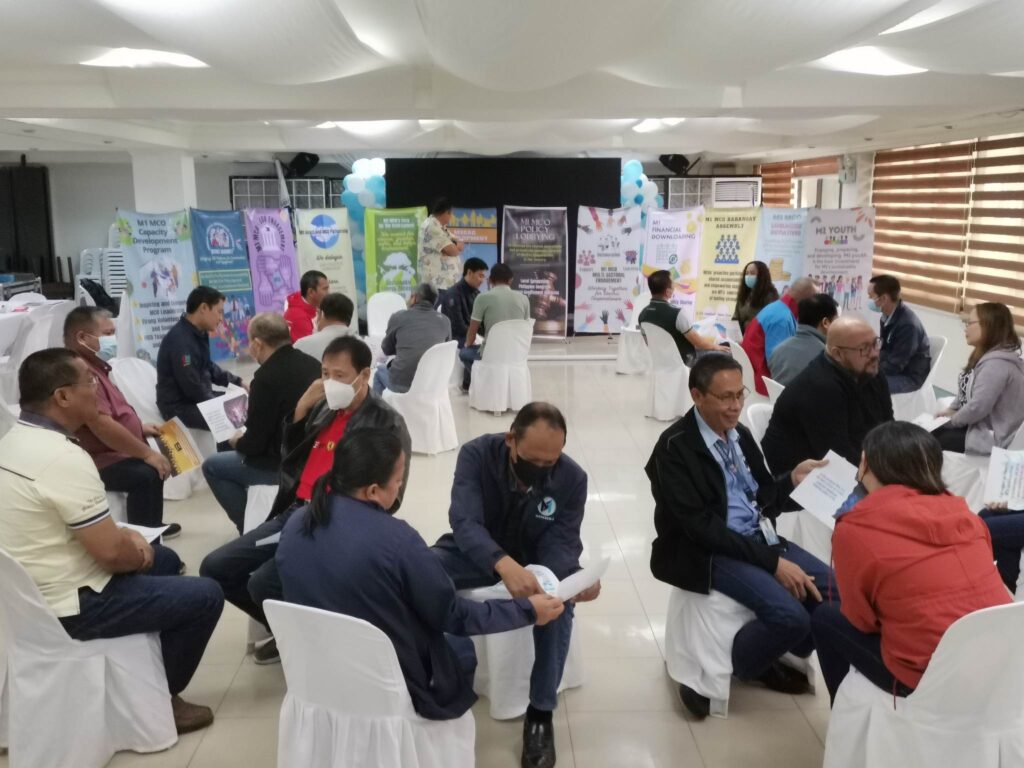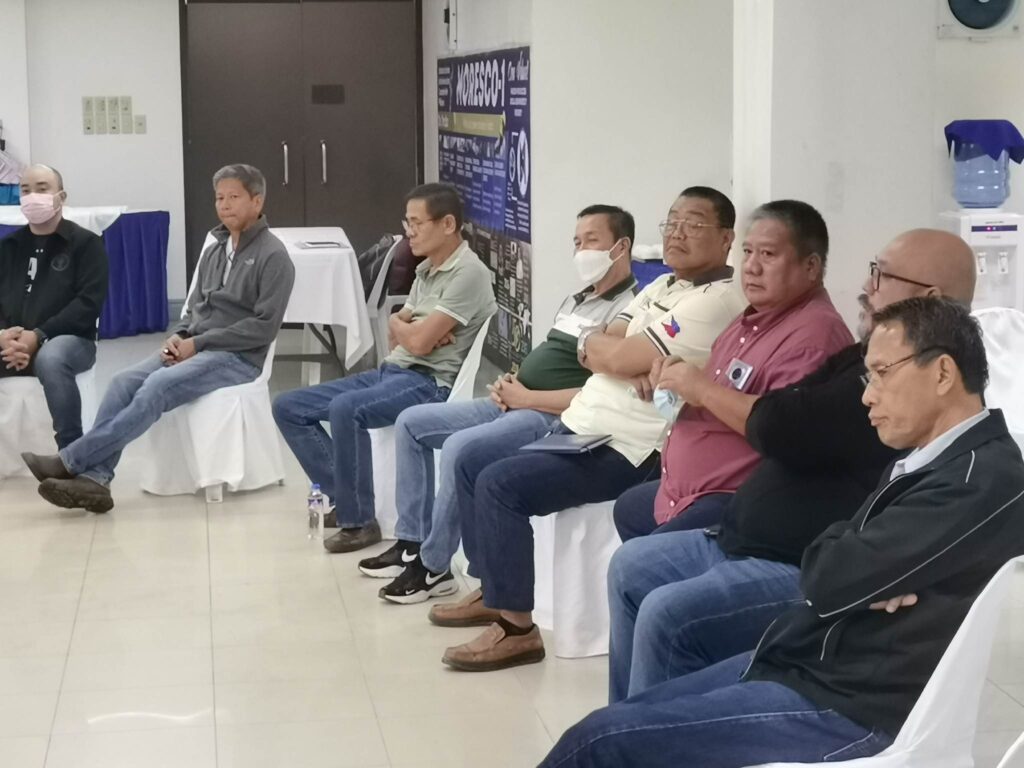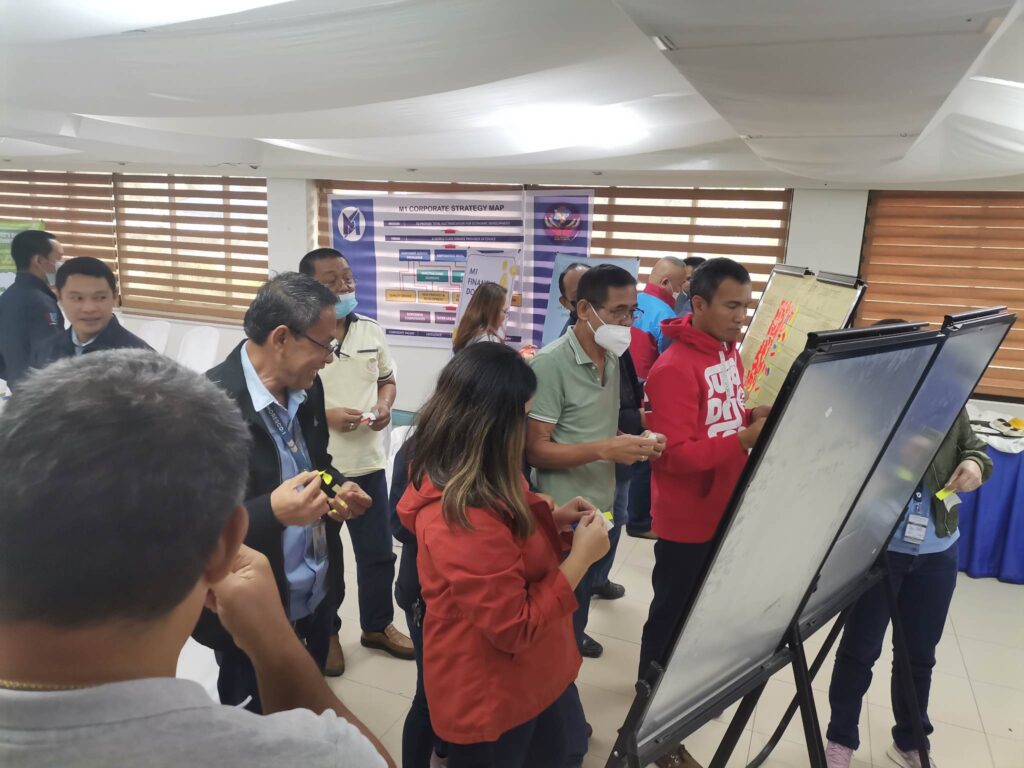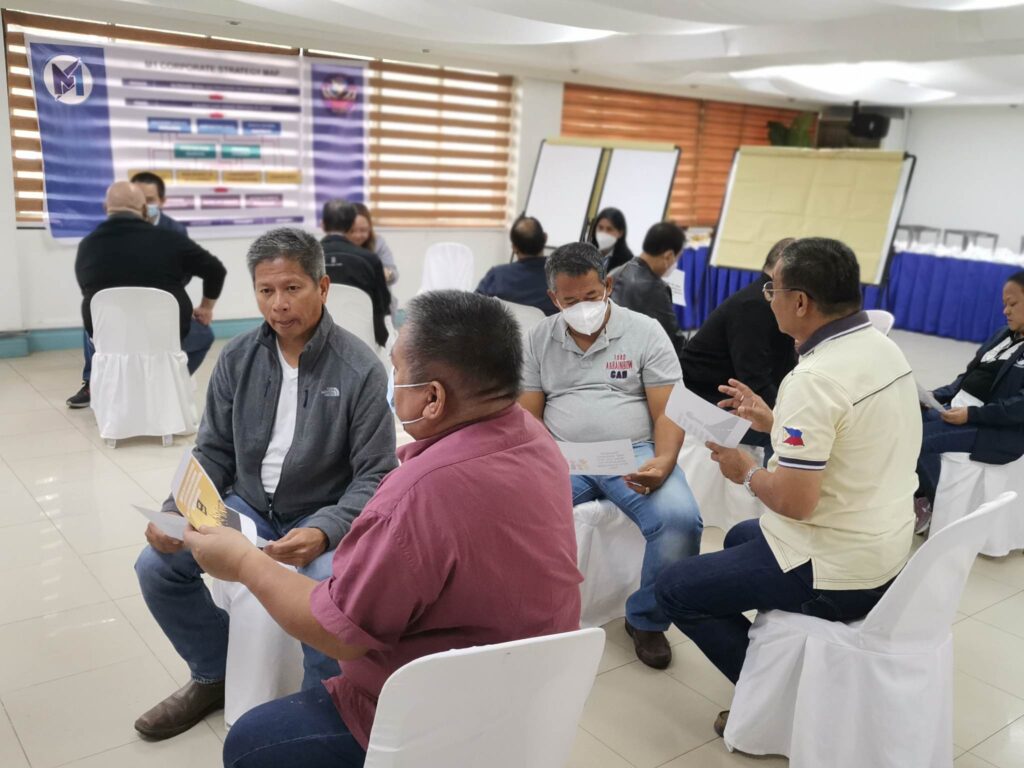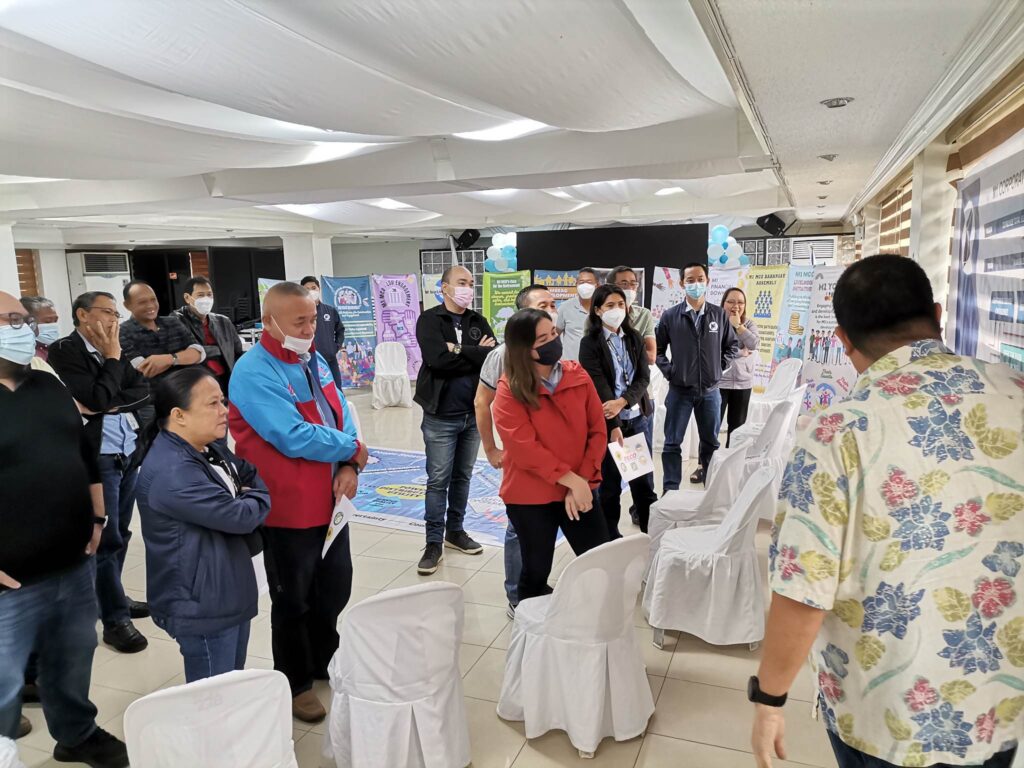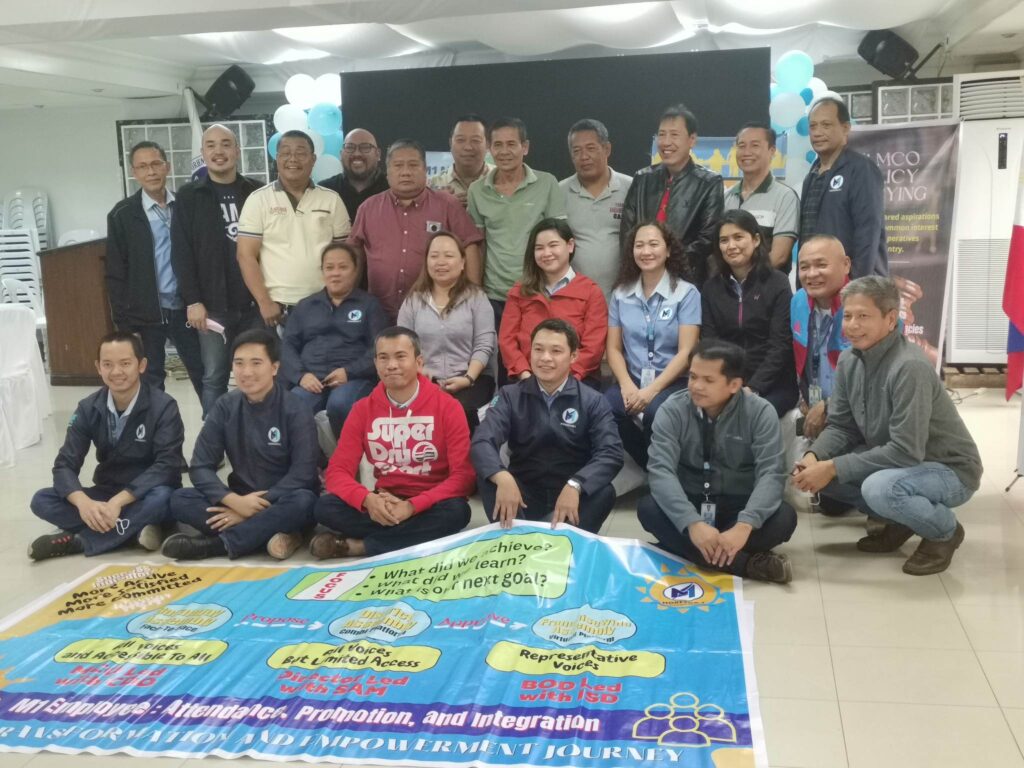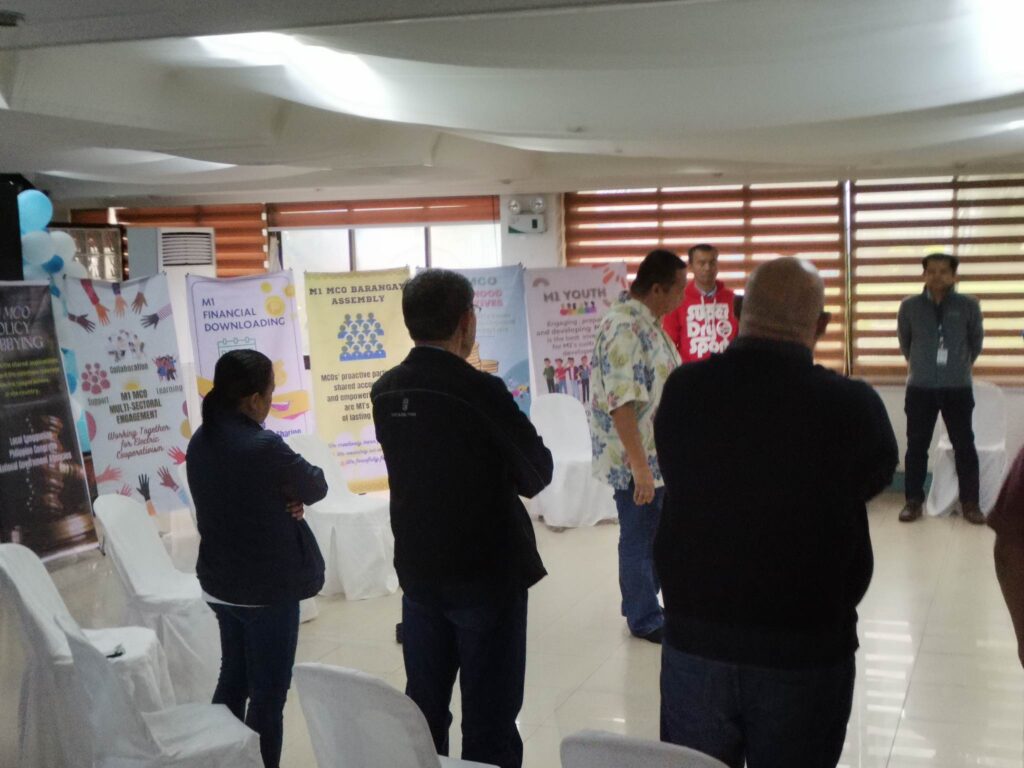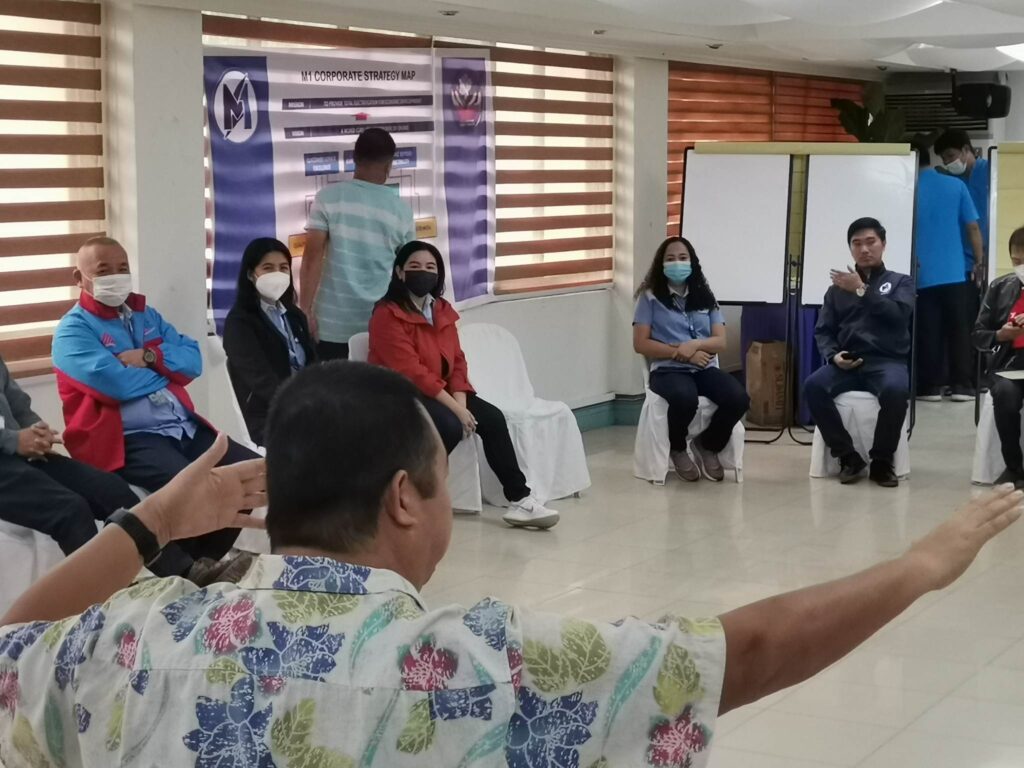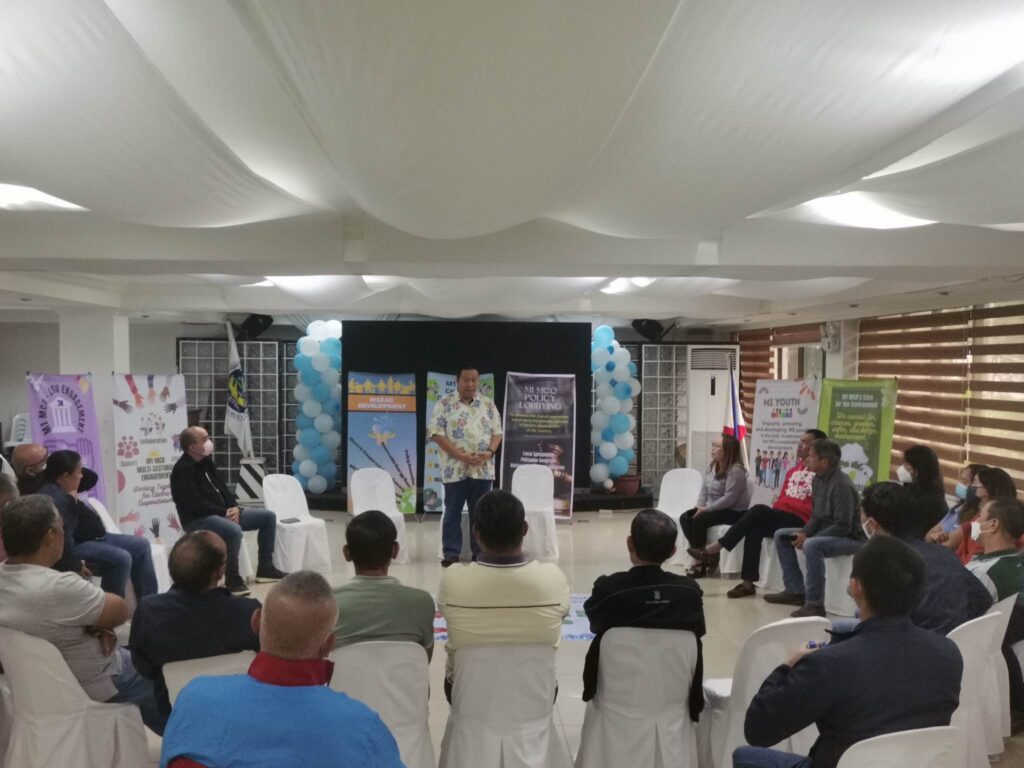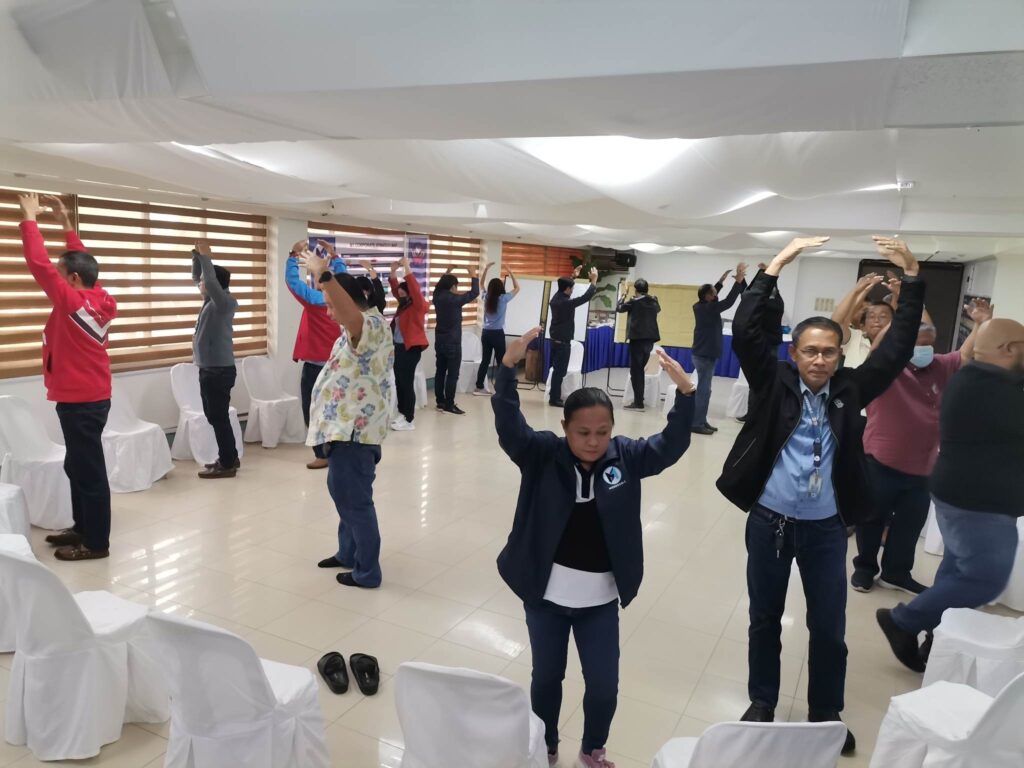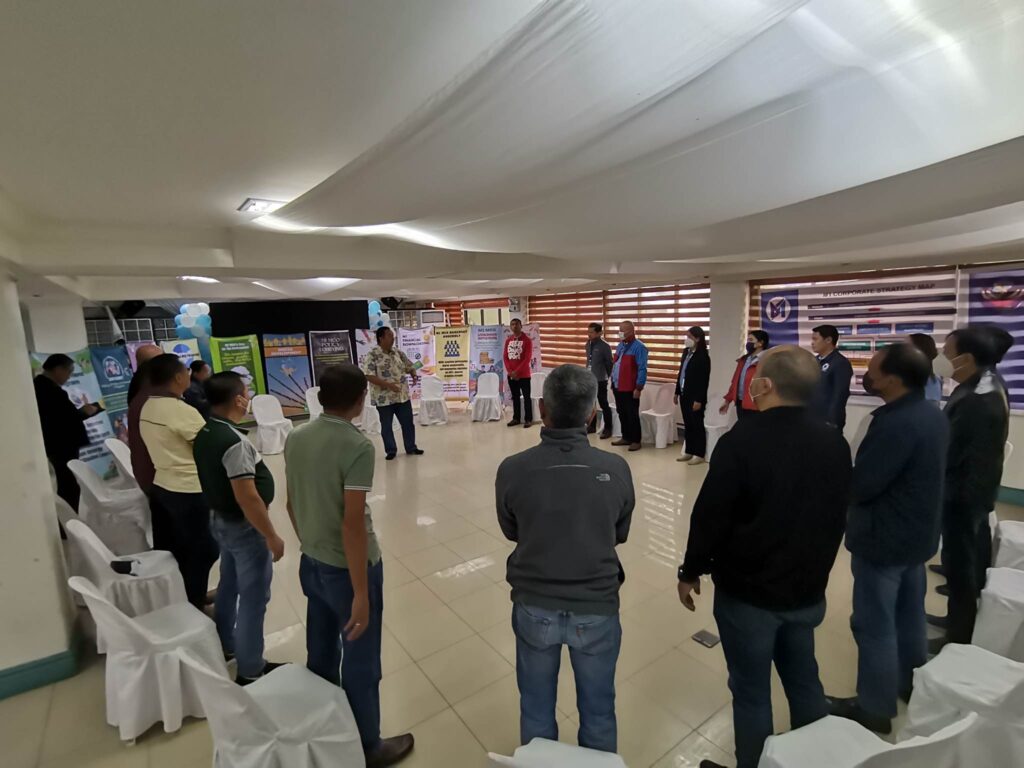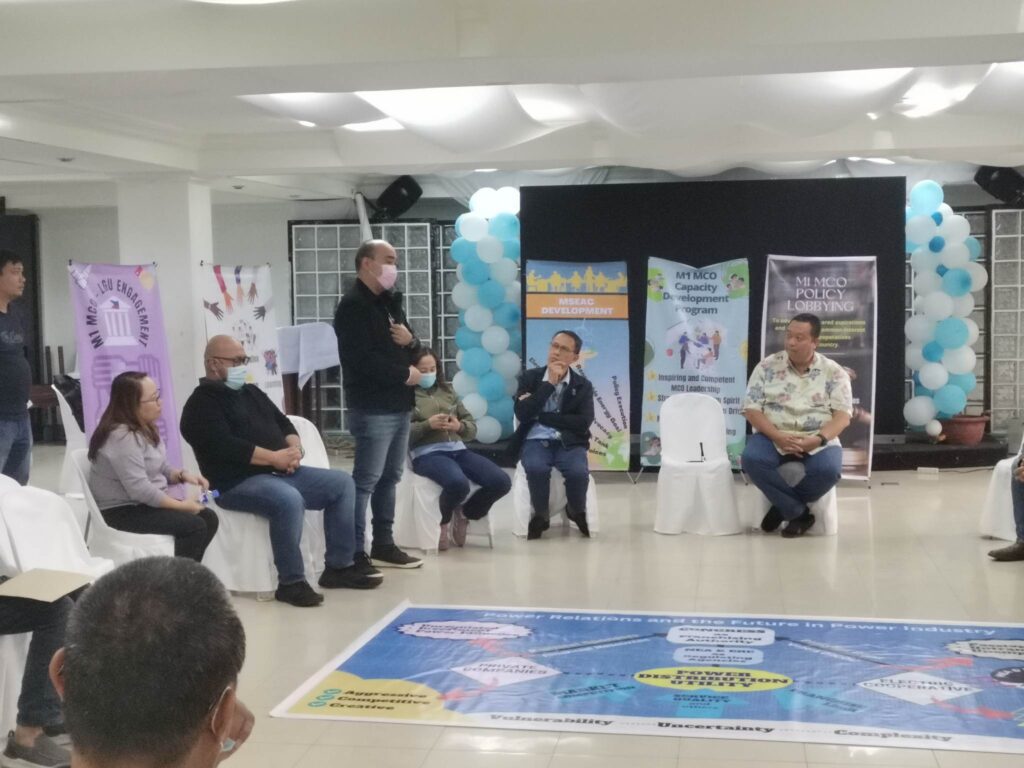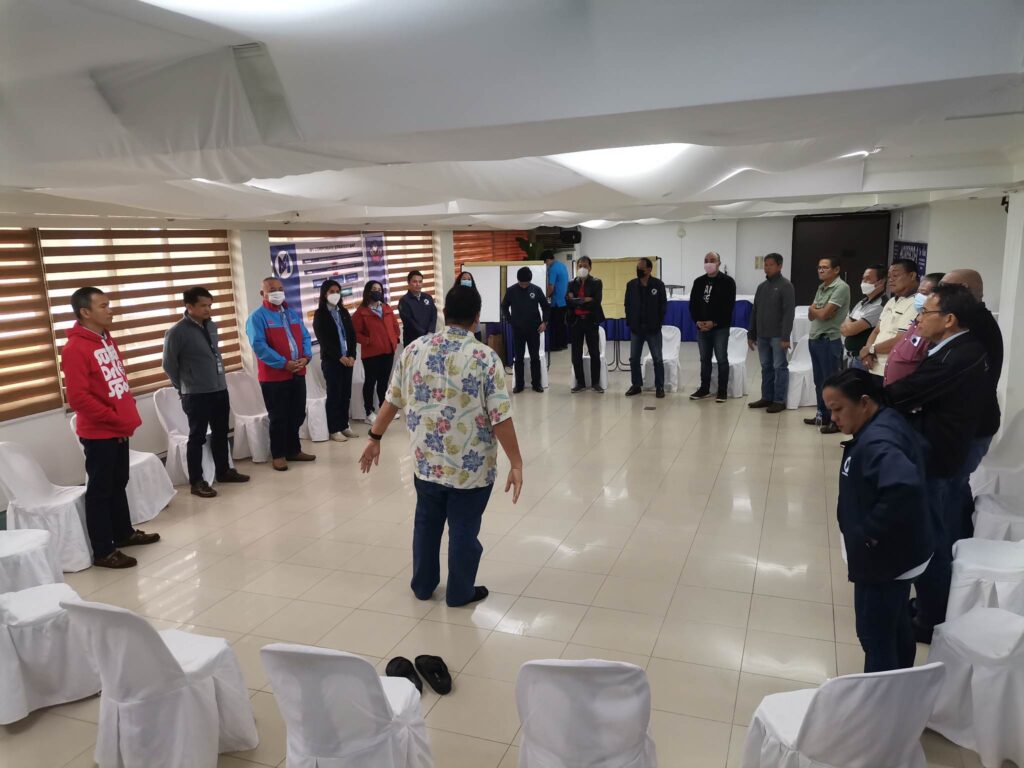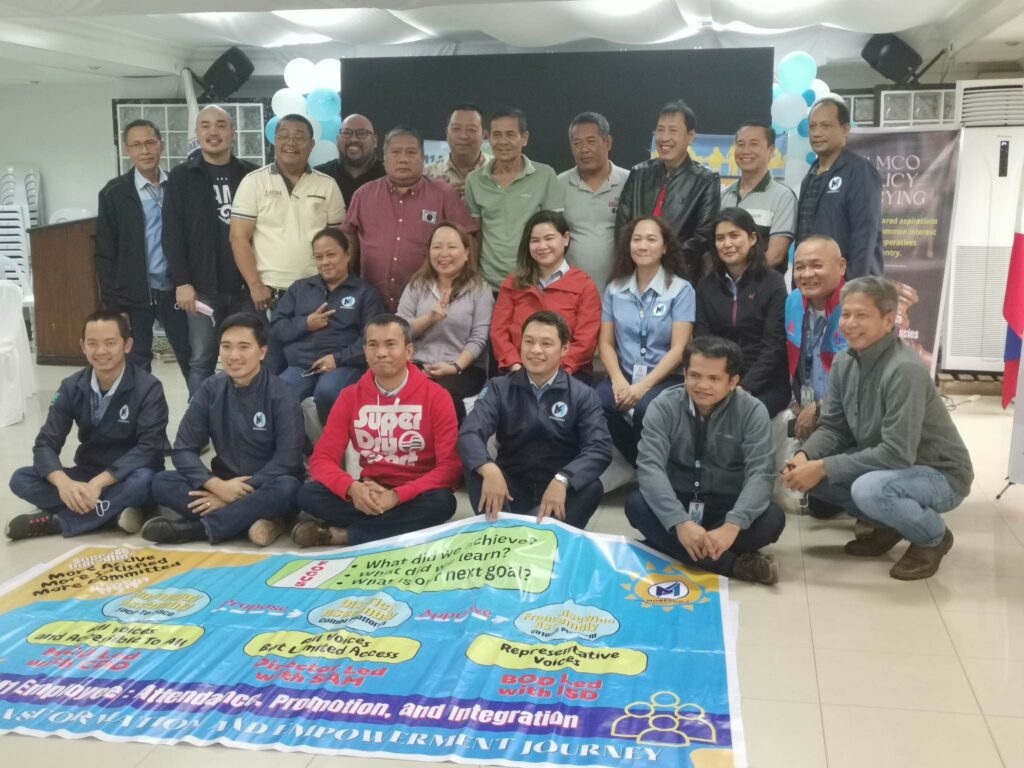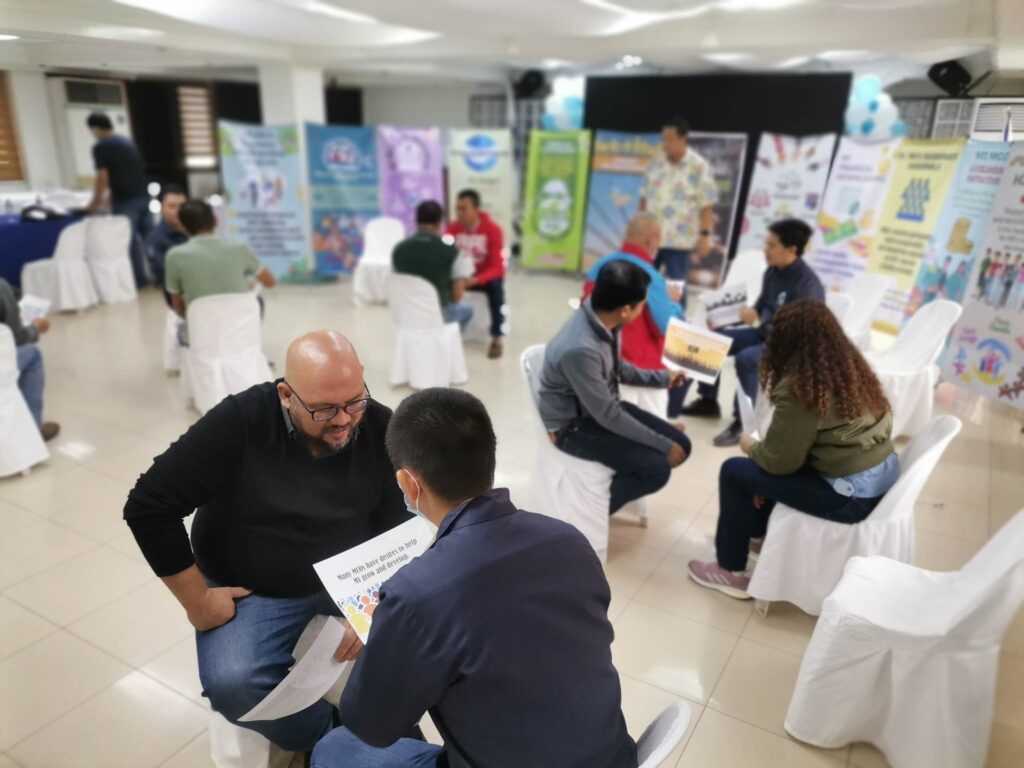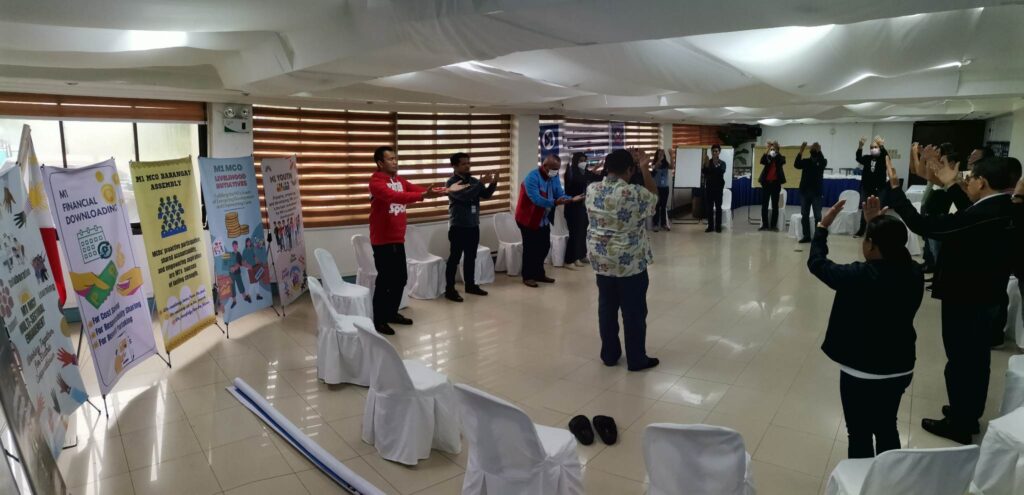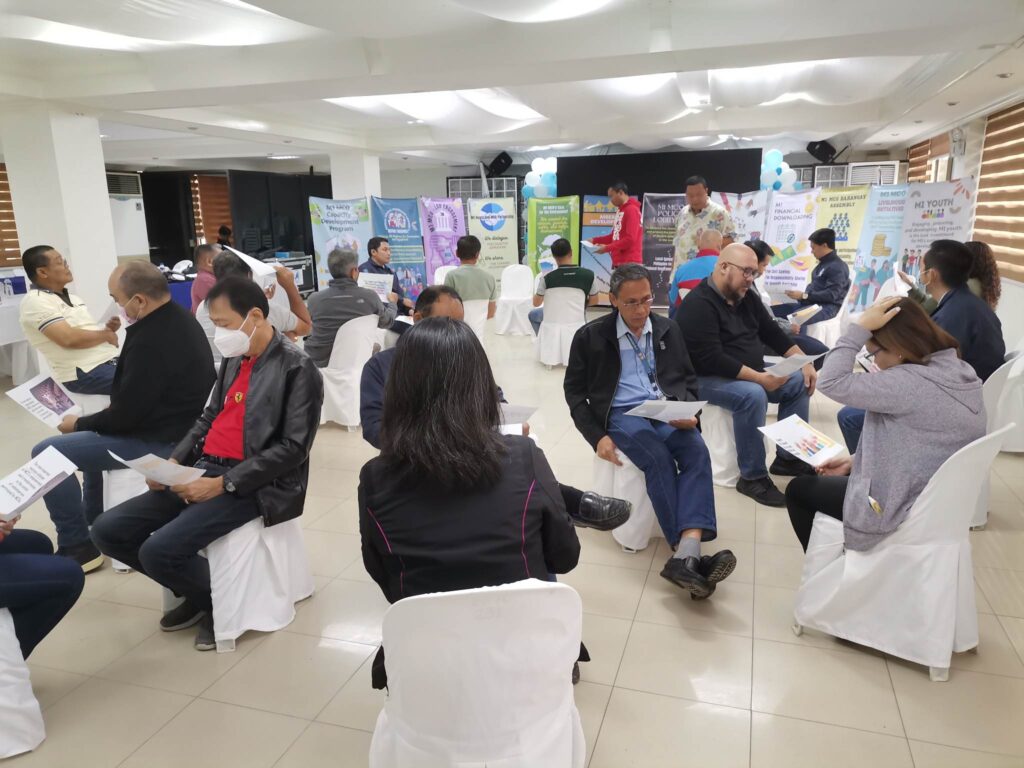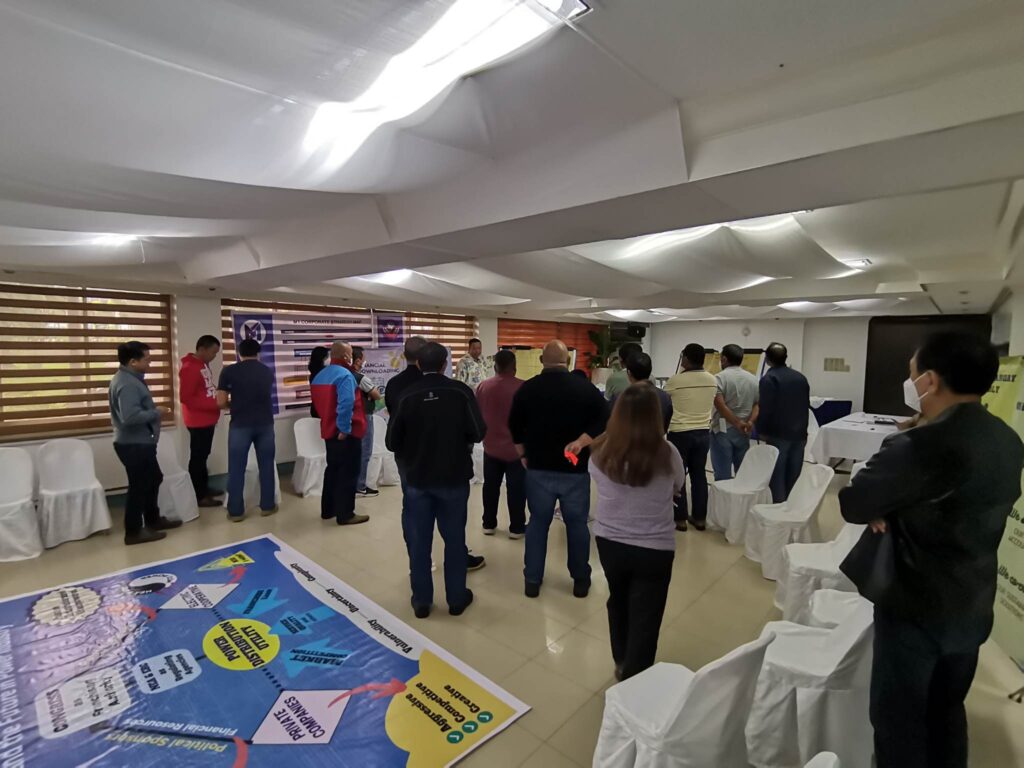January 26, 2023. EPTC Function Hall, Laguindingan – Exactly 10 days after our CDOs, a few of our leaders, CWOs a couple of our Service Area Managers, gathered in EPTC to strategize for future Institutional projects, our Board of Directors led by President Nonito M. Labis and the management committee led by GM Jovel B. Ubay-Ubay got into a fun and innovative capability development workshop facilitated by Dr. Dixon Yasay. This time, the capability development framework used by Dr. Yasay, was Bridging Leadership.
Yasay, a renown inspirational speaker on strategy and policy communication and community organizing, resented a fun and creativity-stimulating exercises where he involved participants in a dialogue without diluting the message.
He mentioned Bridging Leadership is the type of leadership that is appropriate in promoting multi-stakeholder processes to address societal inequities. It is about leading collaborative action to bring about social change. The leadership acts involves three main segments: Building Ownership of the response, Developing Co-Ownership with other stakeholders in this case Member-Consumer-Owners (MCOs) and together engaging in the Co-Creation of a new reality
The bridging leader whose values and principles compel him to make a personal response to address inequities and societal divides recognizes that the complexity of the problem can only be solved by convening the MCOs to the divide. (Ownership)
Through a process of dialogue and engagement, the stakeholders arrive at a common vision and collective response to the situation. (Co-ownership)
The stakeholders then adopt a social innovation that leads to the societal outcome, and carries it out through new institutional arrangements. The bridging leader and the coalition of stakeholders (MCOs) ensure that these institutional arrangements have clear and measurable goals with the required capability and resources to demonstrate results. They regularly review their progress vis-à-vis the desired societal outcome and assess the individual and collective roles and accountabilities in the process. (Co-creation)
Over time, these arrangements become formal processes that lead to a reform-conducive policy environment and responsive programs and services. Other stakeholders are invited to the coalition regularly, and new bridging leaders are developed to sustain the transformation process toward societal equity.
(Mentioned from the Asian Institute of Management TeaM Energy Center for Bridging Leadership. Photos by MCIRO Ivy S. Fabrigas and Texts by CPRO Archibald G. Pacana)
